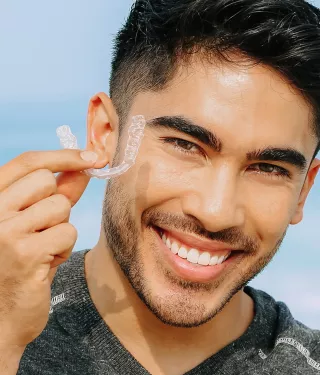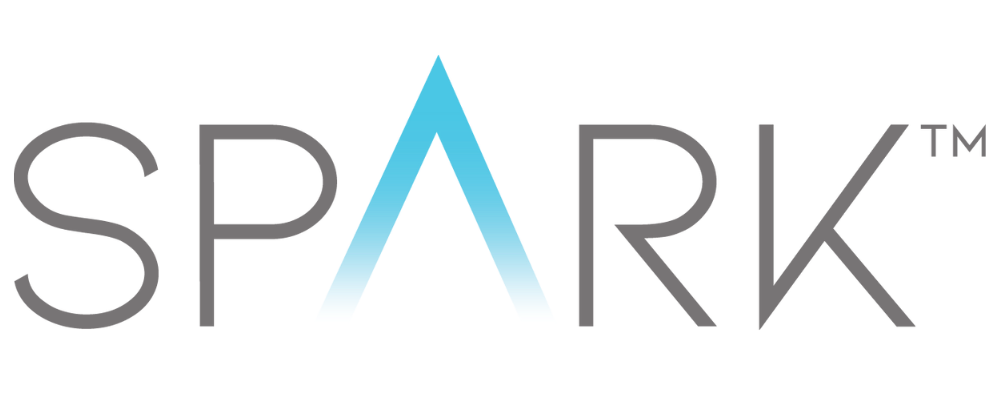How Aligners Work: Determining If Clear Aligners Are Right For You

Mike Mayhew, DDS, MS, received his dental education from the University of North Carolina with dual-specialty degrees in pediatric dentistry and orthodontics. He is board-certified in both specialties and operates two dual-specialty practices. Dr. Mayhew lectures nationally and internationally on the Damon System, CAD-CAM digital orthodontics, indirect bonding, and CBCT utilization. He is on the Sports Medicine Team at Appalachian State University, is an adjunct clinical professor at the UNC School of Dentistry, and serves as director of the North/South Carolina Damon Study Club. He was inducted into the American College of Dentists in 2010 and the International College of Dentists in 2013.
What are the Differences Between Braces and Aligners?
As orthodontists, we have an awesome profession that provides us the opportunity to interact with patients and families interested in improving their smiles and bites and, in turn, impact many lives along the way. While braces are still a very prominent treatment implemented in most orthodontists’ offices, many patients seeking treatment these days are also inquiring about the option to use clear aligners. Would aligners work for me? How do clear aligners work? What is the difference between clear aligners and braces? What is it like to wear clear aligners? Are clear aligners more expensive?
Our office has offered clear aligner therapy for over 20 years. During my orthodontic training, clear aligner treatment did not even exist while clear braces were the newest item on the horizon! So although I was trained at one of the top programs at the University of North Carolina at Chapel Hill, I, like many other orthodontists, began to learn the ins and outs of aligner therapy when it was first introduced to our profession! The results of treatment with the initial clear aligners did not always meet the expectations of the treating orthodontist…or was it that the orthodontists were learning a different method and treatment management, expecting the same outcomes they were accustomed to obtaining with braces? Clear aligner treatment is definitely different from braces treatment. Now that we have the experience of multiple years treating patients, we understand those differences. Knowing how we can achieve the same results we are accustomed to achieving with braces, we are better at making appropriate recommendations about clear aligners to our patients. If you want to learn more about how clear aligners work, follow along as we explore the treatment options, pros and cons, and mechanics of this new technology.
Understanding Your Treatment Options
During the new patient examination appointment, the orthodontist reviews the patient’s diagnostic information and discusses treatment needs and benefits with them. Invariably the discussion is soon directed by the patient to the possibility of clear aligners. Some patients have done their homework, understand how clear aligners work, know all about aligners, and are adamant that is what they want. However, others are just curious to know more about aligners and whether that system could work for them.
Having this opportunity to review treatment considerations with an orthodontist, as well as their treatment coordinator staff, is a key aspect of the patient/parent fully understanding their treatment options. There is no way “mail order aligners” can match the professional interaction, knowledge of your specific needs, and best treatment options for you! Sure, these types of aligners are intriguing to some seeking care, typically by being less expensive, but what price can one put on their overall dental health, bite, and smile?
In our office, we prefer to offer metal and clear braces or clear aligners at similar pricing, instilling in our patients that we want the best result for them in the manner they choose without the pressure of a decision made solely on price. We fully explain how clear aligners work when compared to braces to ensure they’re making the best decision.
Aligner vs Braces Treatment Times
With our experience in treating patients with both braces and aligners, we find that, on average, treatment time is approximately the same for similar malocclusions regardless of appliances used. While some orthodontists prefer to use aligners for all cases, there can be some malocclusions that, due to their severity of tooth malalignment or jaw discrepancy, may be best treated with braces. These often include severe rotations or significantly malaligned teeth, significant jaw malalignments and crossbites, or treatment options requiring tooth extractions.
There are also malocclusions that are optimally treated with clear aligners, specifically where teeth are tipped rather than significantly rotated, allowing the clear aligners to right or eliminate the tipping that in turn is a very efficient way to align the teeth. Clear aligners have been shown to be very beneficial for persons whose back teeth fit together but the front teeth do not; a condition known as an openbite. With the patient wearing the clear aligners and the material “thickness” basically pushing the back teeth apart, clear aligner treatment serves to promote an improved bite to the anterior teeth.
How Clear Aligners Work to Straighten Teeth
Clear aligners straighten teeth by “hugging” the teeth when the aligners are worn. Aligners work best the more the tooth can be hugged! Often, patients will note small spaces opening between their teeth during treatment. This is an intentional movement to aid the clear aligners in working more efficiently. The orthodontist may also review a process called interproximal reduction or “polishing” of the enamel between crowded teeth to help create spacing to promote better alignment. These areas that are polished are usually a few tenths of millimeters and when properly completed do not compromise the health of the tooth.
Small amounts of movement are programmed into each aligner. It is difficult for the orthodontist to fully estimate the number of aligners required for any particular treatment. As mentioned previously, some movements may be more challenging than others and require more aligners to achieve the changes. When changed, usually on a weekly basis, the teeth move from the push on the teeth that the aligners exert into the positions that the orthodontist plans for your treatment. After progressing through the specific numbers of aligners from the initial treatment plan, many patients benefit from another series of aligners, called a refinement, to finalize treatment results.
Many adult patients show more crowding in the lower teeth than the upper teeth. One option we have offered multiple patients is clear aligner therapy for the upper teeth with braces on the lower teeth! This requires the orthodontist to coordinate a pre-planned clear aligner therapy with constant monitoring of how the lower teeth are aligned with braces and wire interactions! We have found this combination treatment satisfies the patient’s concern for esthetics and convenience of the removable aligners yet allows the orthodontist to better manage the more complicated malalignment to the lower teeth.
You’ve Decided Clear Aligners Are for You—What’s Next?
So, after reviewing all this information about how aligners work as compared to braces, you have decided on using aligners for your orthodontic care! Congratulations! Now what’s next? Your orthodontist and treatment coordinator staff may discuss the different clear aligners available. For many years, there was basically one dominant manufacturer of clear aligners. With changes in patents and the increase in demand, other companies now provide clear aligner options with orthodontists.
Ormco Corporation is a company we have worked with for many years within our practice and have trusted in their products to provide for thousands of patient’s orthodontic care. Over the past few years, Ormco has developed and tested their new aligner system called Spark. We were fortunate to participate in their beta testing of the product and were very impressed with the results. With constant improvements through advances in software, Ormco has developed a high definition 3D viewer and tools designed to improve the orthodontist’s treatment planning and to provide treatment efficiencies for patients. From our experiences of treating over 160 cases over the last 16 months solely with the Spark Clear Aligner System, we have noted that most cases require fewer aligners than we had seen while using other systems when managing similar types of treatments.
The Spark Aligner system offers a slightly different option to people who prefer clear aligners for their treatment plan. As beta testers, we have unique insight into their operations and can provide you with an overview of how Spark Aligners work.
How Spark Clear Aligners Work
Once we determine a treatment plan, the orthodontist prepares a prescription of your proposed treatment and sends the information to the aligner company’s dental lab. Following that plan, lab technicians develop a course of treatment for your orthodontist to then review. There may be multiple communications between the orthodontist and the lab technician to map out and stage the best course of care, as this step also determines the number of initial aligners you may be required to wear.
Following any changes made to the plan, the orthodontist approves your clear aligners therapy and laboratory fabrication of the necessary aligners begins with the chosen manufacturer. When your aligners are delivered to start your care, your orthodontist will determine your specific time to return to the office so your progress can be observed to be sure the teeth are moving as planned. Changes in a treatment direction are possible, and having the treatment monitored routinely by orthodontists specifically trained for that is extremely important.
Some aligner materials may be more rigid and could be more uncomfortable with stronger forces to the teeth when inserted. Typically, these types of aligners may lose a large portion of their tooth moving forces within a few days, possibly requiring more aligners to achieve the results. Ormco’s Spark Aligner material is state of the art and patients state how comfortable the aligners feel when inserted, noting that they don’t feel heavy pressures to the teeth. Spark Aligners are trimmed optimally near the gingival tissues and highly polished to aid in preventing any irritation that may affect your gingival tissues or make your tongue hurt. In addition, while exerting less pressure on the teeth, those light pressures are adequate to complete tooth movement with optimal maintenance of the pressures until it’s time to change to the next aligners.
How Clear are Aligners and How Long do You Need to Wear Them?
Some aligners are not as clear as others, and patients may feel that their aligners are more noticeable to others than they had anticipated. Ormco’s Spark Aligners are very clear and not noticeable when worn. Another consideration for patients is to understand that some teeth may require small tooth colored “attachments” that allow the aligner plastic to best hug the tooth to ensure that specific movements occur. These attachments have been used with most aligners for years and are well tolerated, but sometimes they may be noticeable when aligners are not being worn.
Optimal wear time for patients to have their aligners on their teeth is approximately 20 to 22 hours per day. This time period is scientifically proven to optimize how aligners work. We emphasize that if a patient has a school project or business meeting where wearing their aligners might make them self-conscious or uncomfortable, to just have the aligners out for that time and be sure to replace them after the event. Our experience has been that if patients find their aligners difficult to wear for the recommended number of hours, they may need to wear each aligner for two weeks as opposed to the normal 1 week intervals. We request that aligners be removed to eat and drink liquids and of course to optimally brush and floss your teeth! We specifically request to never have a sugary drink with your aligners in your mouth, as this could result in significant damage to the enamel surfaces.
Remember that the aligner material is plastic and is heat-formed during the manufacturing process, so very hot water is not recommended. Leaving your aligners in a car or location where they could get very hot may also distort them! Aligners are best cleaned with soap and warm water. Commercially available foam cleaners are available that keep the aligners clean and tasting fresh during wear.
Deciding if Clear Aligners are Right for You
Clear aligners may just be the treatment tool you can best benefit from to achieve the smile of your life! Ormco’s Spark Clear Aligners are the newest addition to their family of orthodontic products, and we have great trust in their products. Spark Clear Aligners are an innovative product built to help the orthodontist offer the best technology to deliver care for their patients and for patients to have the most clear “clear aligners” in the industry with treatment designed for comfortable and optimal results.
Now that you know how clear aligners work and how Spark Clear Aligners work, you can trust your oral health and beautiful smile to a trained orthodontist specialist to best achieve the results you demand and ask them to put a Spark in your smile!
If you don’t have an orthodontic provider, Spark can help you find one that works with clear aligners today. Visit the Find a Provider Page to find someone in your area.



